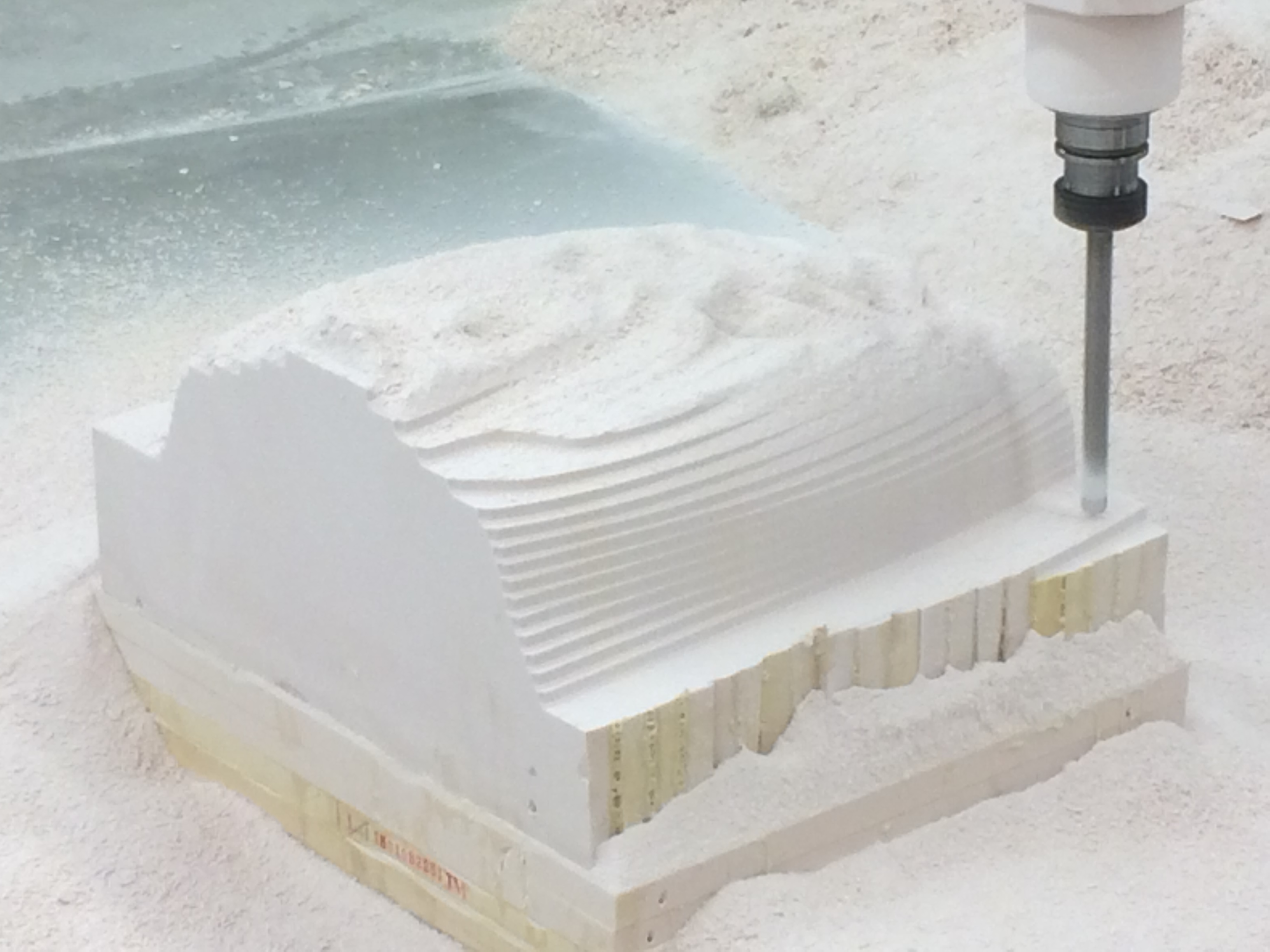A team of engineering students from the University of California – San Diego (UCSD) designed and fabricated a unique human-powered submarine as part of their classroom learning experience. Instead of using a rotary propeller, they took a cue from marine life and designed a dolphin fin propeller. The students created fiberglass female molds out of Precision Board HDU which were used to create a carbon fiber hull for their submarine. In a series of videos, the human-powered submarine team show us how they went from design to fabrication and every step in-between.

Tobin Gutermuth a structural engineering student and president of UC San Diego’s Human Powered Submarine Team and documented their process from design to fabrication and showed how they used Precision Board HDU to create female molds that would eventually be used to make a carbon fiber hull. Competing in the one-person non-propellor division, Vaquita features an up-down tail for propulsion, a unique six-bar linkage, and the team’s very first pneumatics systems. The heart of the submarine is its drivetrain, which translates rotational motion into oscillation. The pilot propels the submarine by pedaling the drivetrain, which uses an innovative six-bar linkage to swing the tail up and down.
According to an article on the UCSD website:
The students made several major design and material changes to their sub this year. For starters, they’ve switched from trying to emulate the side-to-side motion of a tuna tail, and instead are mimicking the up-and-down sinusoidal movement of dolphins. The races in Maryland only require contestants to speed in a straight line, whereas the race in England has an obstacle component that the sideways motion wouldn’t be ideal for.
“We came up with a linkage system in the submarine tail to optimize for a perfect sinusoidal force output,” Gutermuth said. “Linkage systems tend to jump, but this one was optimized using a genetic algorithm to optimize for a perfect sweeping motion.”
“We used several 1.5 inch sheets of Precision Board to build 7 blocks of foam,” he says. They then machined the blocks of foam with a Kuka Robot CNC at UCSD to build a plug in seven sections.

Tobin says, “we bonded the sections together and made a fiberglass female mold from the plug.” He adds, “we made an awesome carbon fiber hull in two sections using the female mold!”
You can see videos of the entire process below, including their test run in the pool.
The UCSD crew first cut the sheets of Precision Board into smaller size pieces to be able to bond them together.
They then took the smaller pieces and bonded them together into larger blocks using Coastal Enterprises PB Bond 240.
Then the UCSD team used a CNC machine the bonded blocks and assemble them to form their plug.
Finally, they shared with us a compilation video of the build process for Vaquita, their human powered submarine, showing all the mold making processes.
After the submarine was built, it was time to test it out in the pool.
After the submarine was completely built and tested, it was time to compete. You can find out how they did at the 2018 European International Submarine Races in our follow up post with a report from the UCSD HPV team themselves next week!
The Human Powered Submarine team at the University of California San Diego designs and builds a fast, safe, and reliable fiberglass submarine that competes at international submarine races, which take place in Bethesda, Maryland and Gossport, UK. Scuba-certified students control the submerged and flooded submarine with human powered propulsion. Students working on this project learn essential CAD, machining, and programming skills and gain a deeper understanding of the concepts that they learn in their classes. The most recent submarine, completed in 2018, is “Vaquita,” named for an endangered species of dolphin. Competing in the one-person non-propellor division, Vaquita featured an up-down tail for propulsion, a unique six-bar linkage, and the team’s very first pneumatics systems.
Coastal Enterprises manufactures Precision Board HDU, a high-density urethane material used extensively in the tooling industry. It is a closed-cell rigid material that does not rot, warp or crack.
Coastal has a long tradition of donating Precision Board HDU to schools around the world in support of the next generation of engineers, designers and artists working in composites. If you are interested in finding out more about our Precision Board school donation program, check out our School Donation page and get in touch with us to see how we can help your program out.